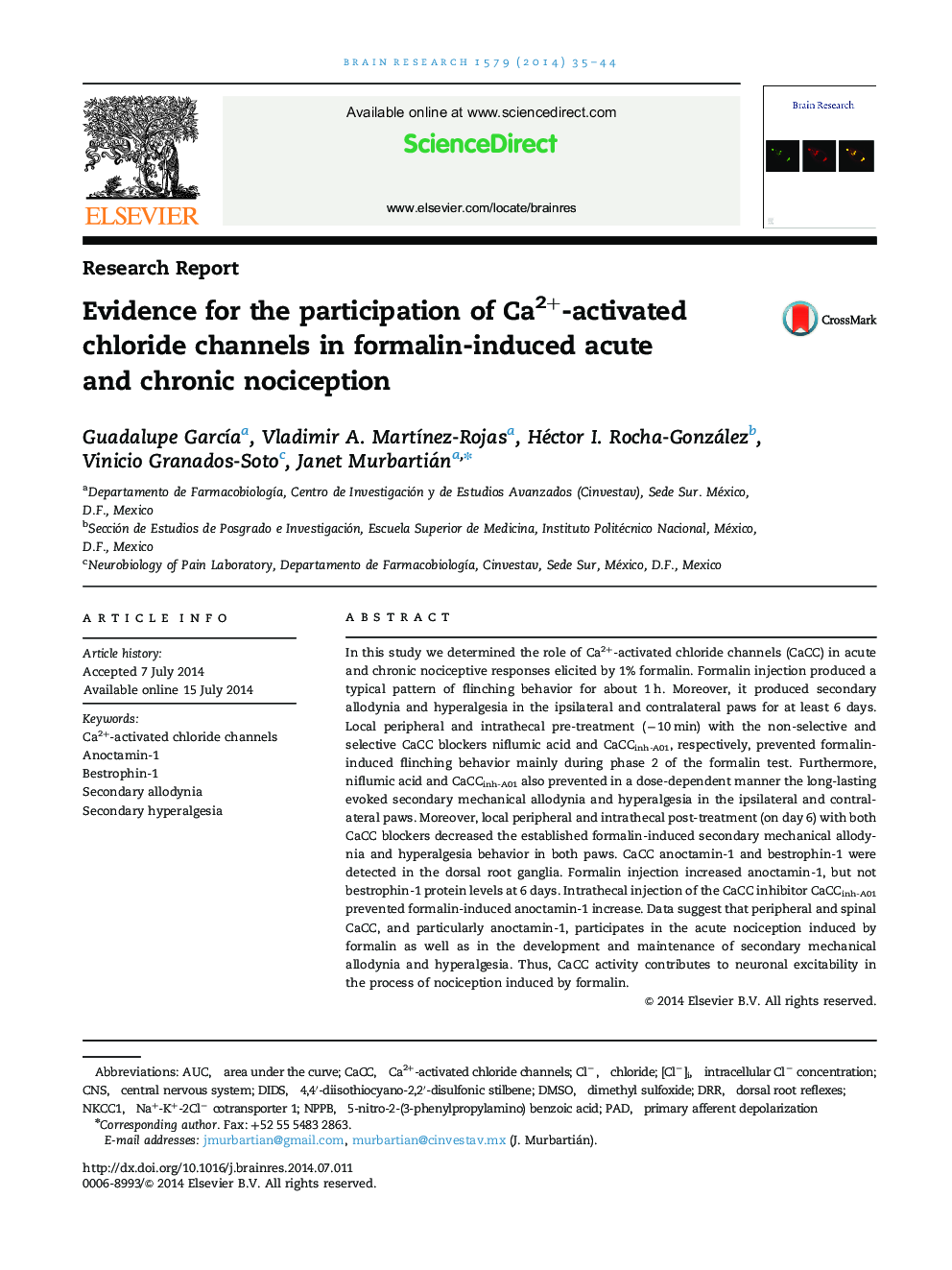| کد مقاله | کد نشریه | سال انتشار | مقاله انگلیسی | نسخه تمام متن |
|---|---|---|---|---|
| 4324185 | 1613860 | 2014 | 10 صفحه PDF | دانلود رایگان |

• Local/intrathecal niflumic acid and CaCCinh-A01 prevented formalin-induced nociception.
• Niflumic acid/CaCCinh-A01 prevented evoked secondary allodynia and hyperalgesia in both paws.
• Local/intrathecal niflumic acid and CaCCinh-A01 reversed secondary allodynia and hyperalgesia.
• Formalin increased anoctamin-1, but not bestrophin-1 expression.
• Intrathecal CaCCinh-A01 prevented formalin-induced anoctamin-1 increase.
In this study we determined the role of Ca2+-activated chloride channels (CaCC) in acute and chronic nociceptive responses elicited by 1% formalin. Formalin injection produced a typical pattern of flinching behavior for about 1 h. Moreover, it produced secondary allodynia and hyperalgesia in the ipsilateral and contralateral paws for at least 6 days. Local peripheral and intrathecal pre-treatment (−10 min) with the non-selective and selective CaCC blockers niflumic acid and CaCCinh-A01, respectively, prevented formalin-induced flinching behavior mainly during phase 2 of the formalin test. Furthermore, niflumic acid and CaCCinh-A01 also prevented in a dose-dependent manner the long-lasting evoked secondary mechanical allodynia and hyperalgesia in the ipsilateral and contralateral paws. Moreover, local peripheral and intrathecal post-treatment (on day 6) with both CaCC blockers decreased the established formalin-induced secondary mechanical allodynia and hyperalgesia behavior in both paws. CaCC anoctamin-1 and bestrophin-1 were detected in the dorsal root ganglia. Formalin injection increased anoctamin-1, but not bestrophin-1 protein levels at 6 days. Intrathecal injection of the CaCC inhibitor CaCCinh-A01 prevented formalin-induced anoctamin-1 increase. Data suggest that peripheral and spinal CaCC, and particularly anoctamin-1, participates in the acute nociception induced by formalin as well as in the development and maintenance of secondary mechanical allodynia and hyperalgesia. Thus, CaCC activity contributes to neuronal excitability in the process of nociception induced by formalin.
Journal: Brain Research - Volume 1579, 4 September 2014, Pages 35–44